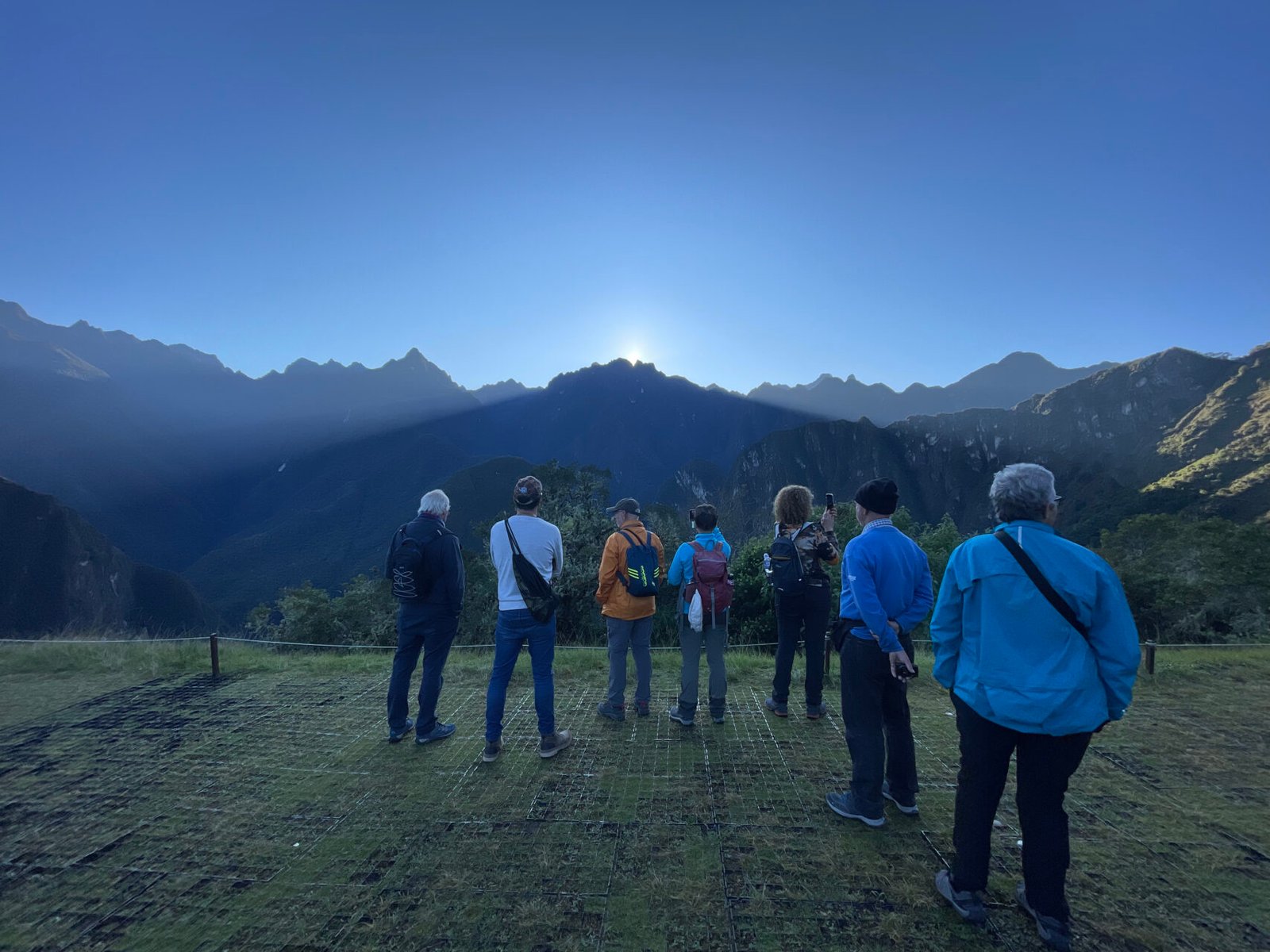
Understanding Altitude Sickness
Altitude sickness, also known as acute mountain sickness (AMS), is a condition that can occur when individuals ascend to elevations above 2,500 meters (8,200 feet) without adequate acclimatization. This phenomenon is particularly relevant for travelers embarking on a tour to Machu Picchu, as the site is located at an elevation of approximately 2,430 meters (7,970 feet). As travelers reach these heights, the body undergoes various physiological changes to adapt to lower oxygen levels.
As one ascends, the reduced air pressure leads to a decrease in the availability of oxygen. The body responds by increasing breathing rates and heart rates to compensate for the lack of oxygen. However, if the ascent is too rapid, the body may struggle to acclimatize, resulting in altitude sickness. Symptoms typically manifest as headaches, dizziness, nausea, and fatigue. In many cases, these symptoms are mild and resolve themselves with rest and acclimatization.
It is essential to differentiate between mild altitude sickness and its more severe forms, such as High Altitude Pulmonary Edema (HAPE) and High Altitude Cerebral Edema (HACE). HAPE occurs when fluid accumulates in the lungs, leading to severe breathlessness and a cough. This condition can be life-threatening and requires immediate descent and medical attention. Conversely, HACE involves swelling of the brain, presenting symptoms like confusion, ataxia, and altered mental states. Both HAPE and HACE are medical emergencies and necessitate urgent care, underscoring the risks faced by those traveling to sites like Machu Picchu or Cusco, where elevations are significant.
Understanding altitude sickness is vital for ensuring a safe and enjoyable experience while touring Machu Picchu. Recognizing early symptoms and gradually ascending can mitigate risks, enhancing the overall experience of visiting this historical gem.
Common Myths About Altitude Sickness
Altitude sickness is often surrounded by misconceptions that can mislead travelers preparing for their tour in Machu Picchu. One prevalent myth is that only inexperienced hikers are susceptible to altitude sickness. In reality, anyone can experience this condition, regardless of their hiking experience or fitness level. The body’s acclimatization to high altitudes varies from person to person, and even seasoned travelers can encounter symptoms. Therefore, it is essential for all visitors, including those embarking on a tour in Cusco, to be aware of the potential effects of altitude sickness regardless of their past experiences.
Another common misconception is that consuming alcohol can alleviate the symptoms of altitude sickness. Some individuals believe that drinking at high altitudes might help them relax or acclimate better. However, the opposite is true: alcohol can exacerbate dehydration and hinder the body’s ability to acclimatize properly. Thus, it is advisable to limit or even avoid alcohol consumption when embarking on a tour in Machu Picchu to ensure a better experience and minimize the risk of altitude sickness.
Additionally, many travelers operate under the belief that altitude sickness only occurs at extreme elevations. While it is more prevalent at altitudes above 8,000 feet (approximately 2,500 meters), symptoms can manifest at lower elevations, especially in locations like Cusco where the altitude exceeds 11,000 feet (approximately 3,300 meters). Therefore, it is critical for travelers heading to Machu Picchu or Cusco to observe their bodies’ reactions even at lower altitudes. Understanding these myths can empower travelers to take proactive steps in their preparation for high-altitude adventures and enjoy their excursions without unnecessary fear or misunderstanding.
Tips for Preventing and Managing Altitude Sickness
When preparing for your tour to Machu Picchu, it is essential to consider the potential impact of altitude sickness. This condition can affect even the most seasoned travelers, as Machu Picchu sits at approximately 2,430 meters (7,970 feet) above sea level. However, by implementing effective strategies, you can mitigate the risk of altitude sickness during your journey to this magnificent site.
Acclimatization plays a crucial role in preventive measures. Before commencing your tour to Machu Picchu, it is advisable to spend a few days in Cusco, a city that lies at an elevation of about 3,400 meters (11,152 feet). This initial exposure to high altitude allows your body to adapt gradually, reducing the chances of experiencing severe symptoms once you ascend to the ruins.
Hydration is another critical factor in preventing altitude sickness. It is recommended to consume plenty of water before and during your trip. Dehydration can exacerbate the symptoms of altitude sickness, so aim for at least three liters of water per day. Additionally, consider your diet; consuming carbohydrates can provide energy while helping to ease the symptoms associated with altitude changes.
Another vital aspect to keep in mind is your ascent speed. Gradual ascents are safer, as they give your body more time to adjust. If your travel itinerary allows, opt for slower-paced tours and avoid rushing to higher elevations. This is particularly essential during the initial stages of your visit.
It is also imperative to listen to your body. Recognizing your own tolerance levels and being aware of initial symptoms can be crucial. If you begin to feel unwell or exhausted, do not hesitate to descend to a lower elevation. In severe cases, seeking medical attention is vital. Familiarize yourself with the nearest health services available during your tour to Machu Picchu for peace of mind.
When to Seek Help: Signs That Altitude Sickness is Serious
Altitude sickness, a concern for travelers on their tour to Machu Picchu and Cusco, can escalate into serious conditions if not properly addressed. Recognizing when altitude sickness is becoming severe is crucial for ensuring both personal safety and that of fellow travelers. While symptoms like headache, nausea, and fatigue are common at high altitudes, certain signs indicate that immediate medical attention is required.
Two of the most dangerous forms of altitude sickness are High Altitude Pulmonary Edema (HAPE) and High Altitude Cerebral Edema (HACE). HAPE presents itself with symptoms such as a persistent cough, shortness of breath, and a feeling of tightness in the chest. If a traveler starts experiencing these symptoms, particularly if they worsen with exertion, it is vital to seek help from an agency travel representative or local guide immediately.
On the other hand, HACE is characterized by neurological symptoms. Common indicators include confusion, loss of coordination, severe headache, and changes in behavior. If any member of a hiking group begins to exhibit signs of confusion or uncharacteristic behavior, it is a critical warning sign. In such cases, descending to a lower altitude is of utmost importance, and contacting medical personnel should be prioritized. Both HAPE and HACE can rapidly progress and pose significant health risks to travelers, necessitating timely intervention during a tour in Cusco or Machu Picchu.
Effective communication among group members is essential. Travelers should remain vigilant about monitoring each other’s conditions, as self-awareness may diminish under high altitude stress. If you or someone in your group begins to show serious symptoms, do not hesitate to ask for assistance. Resources such as local clinics and medical services must be readily identified prior to undertaking any hiking endeavors. By understanding these signs, travelers can help ensure a safe and enjoyable adventure in the breathtaking landscapes of Machu Picchu and Cusco.
